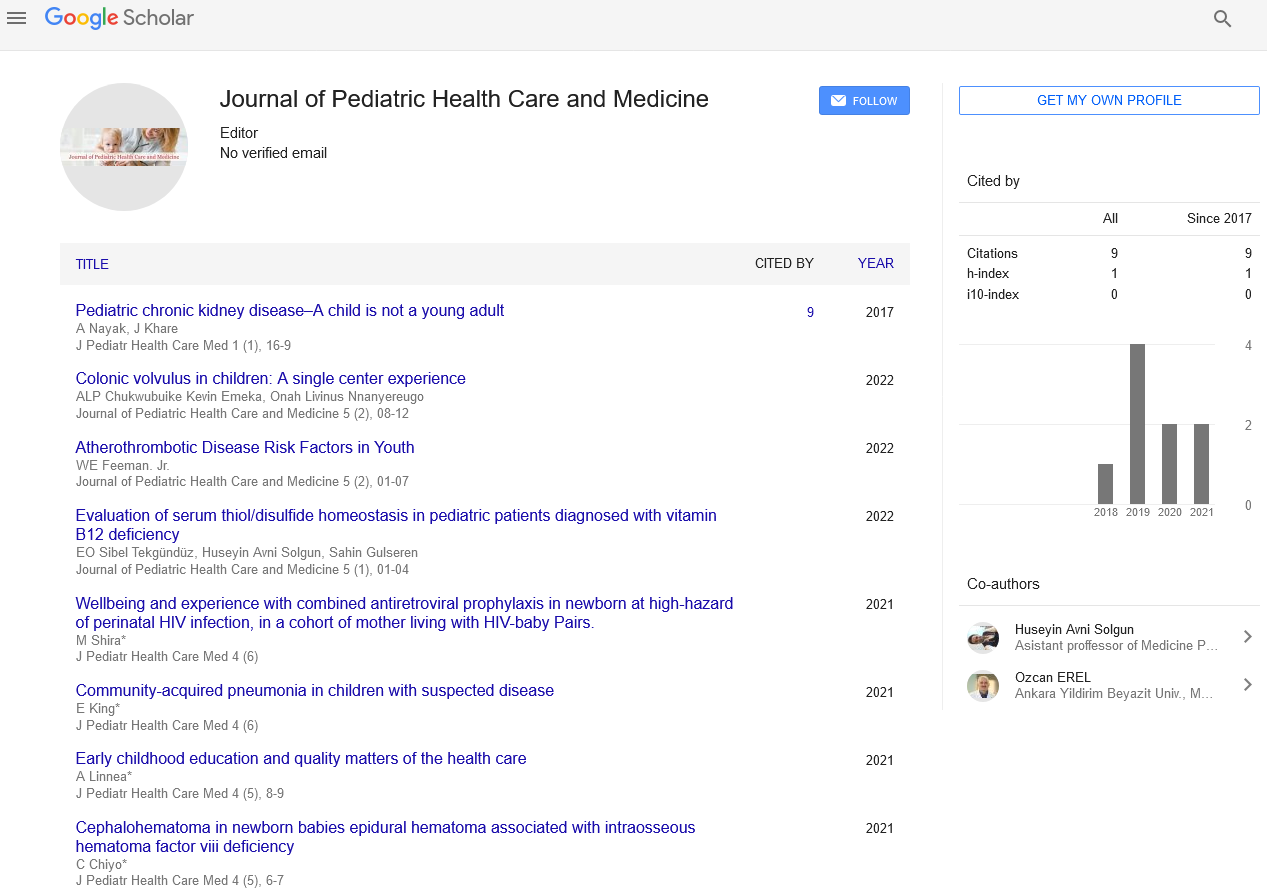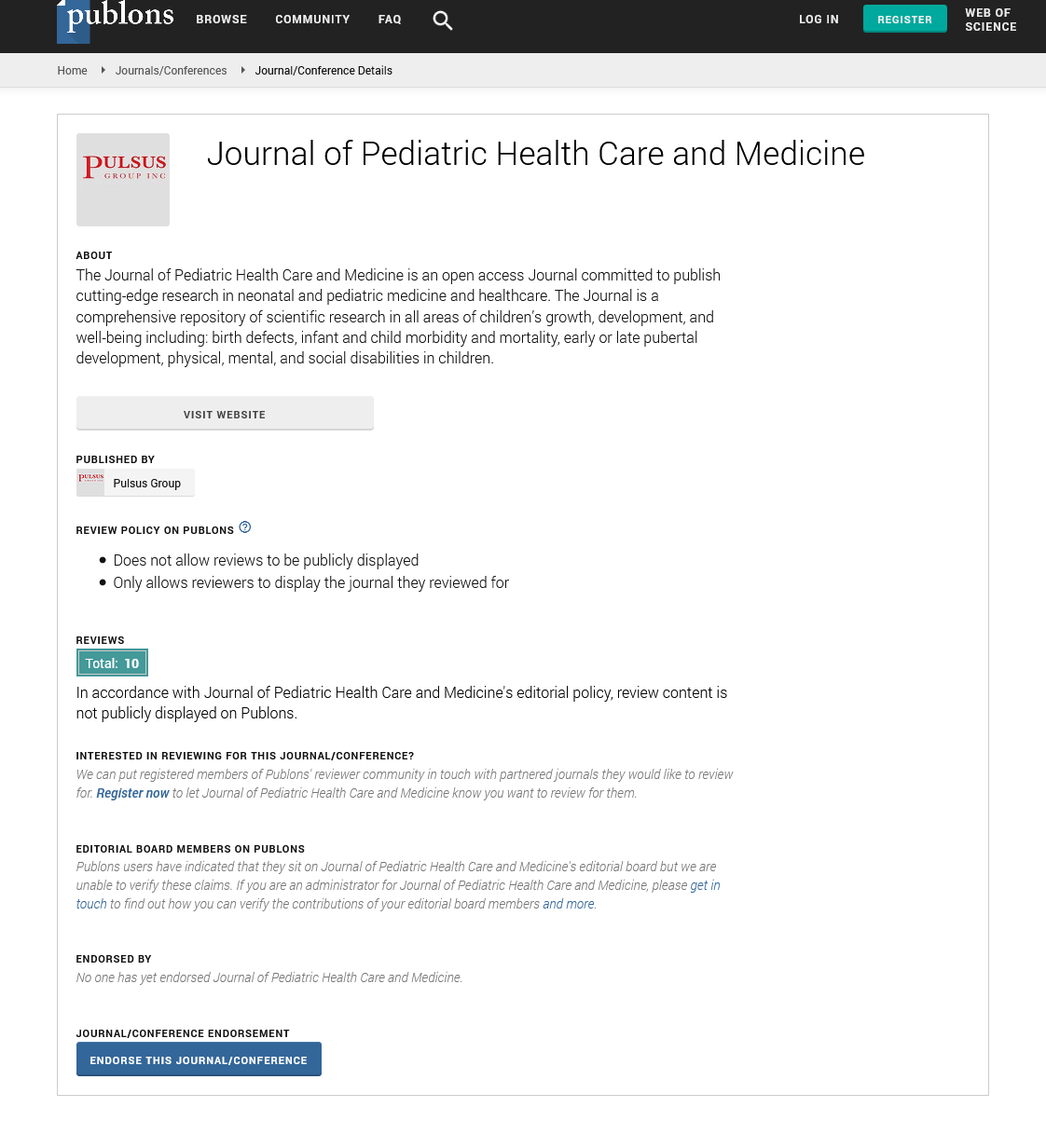
Sign up for email alert when new content gets added: Sign up
Abstract
General Pediatrics 2017: Reversal of morbid obesity in adolescents combining laparoscopic sleeve gastrectomy with a multidisciplinary treatment program- Dani Yardeni- Tel-Aviv University
Author(s): Dani YardeniBackground: Obesity has become one of the most important public health problems in children and adolescents. Standard treatment for obesity in adolescents repeatedly shows only modest weight lost and surgery has become the last option for many morbidly obese adolescents. Laparoscopic sleeve gastrectomy (LSG) is a bariatric surgery that has shown good results with a relatively low rate of complications in morbidly obese adults. Currently, data on the efficiency of this procedure in the pediatric age is still scarce. Further, we use a multidisciplinary team that include pediatric surgeon, pediatric endocrinologist, pediatric psychiatrist, sport medicine specialist, dietitian, psychologist, and social worker in the care of morbid obese adolescents referred to LSG, as required by the Israeli Ministry of Health in its guidelines on adolescent bariatric surgery. The aim of this study was to examine the ability of LSG backed by a multidisciplinary team in reversing morbid obesity in adolescents.
Methods: Data were prospectively collected prior to surgery and at 3, 6, and 12-month intervals from all adolescents undergoing LSG at our institution and included age, gender, height, weight, body fat percentage, comorbid conditions, postoperative length of stay, operative and postoperative complications. Severe obesity was defined as body mass index (BMI) above the 99th percentile of US CDC growth curves in adolescents, as defined by the American Academy of Pediatrics.
Laparoscopic sleeve gastrectomy may be a restrictive procedure without the malabsorptive component present in other bariatric procedures. It involves resection of two-thirds of the stomach to supply increased satiety and decreased appetite.1 through restriction within the stomach size, the intragastric volume is a smaller amount ready to accommodate a large volume of food leading to decreased food consumption. In addition, a lower volume of food results in earlier distention of the stomach causing firing of stretch receptors within the gastric wall. These signals are communicated via the vagus nerve to the nucleus of the solitary tract in the brainstem which then signals to the hypothalamus and then the cerebral cortex leading to the perception of satiety.2 Decreased levels of ghrelin that occur as a result of resection of the gastric fundus, the location of ghrelin production, also likely leads to greater satiety.3 Other purely restrictive procedures like laparoscopic gastric band placement involve surgical implantable devices leaving a far off body in situ for future increased restriction if necessary, whereas the sleeve gastrectomy surgically and permanently reduces the dimensions of the remnant stomach.
History: Sleeve gastrectomy for weight loss was first described by Marceau in 1993 as a component of biliopancreatic diversion. Laparoscopic sleeve gastrectomy (LSG) was performed as a component of biliopancreatic diversion with duodenal switch (BPD-DS) in 2000 by Ren, et al. and subsequently used because the initial stage of a two-staged approach for super-morbidly obese patients. Super-morbidly obese patients have more complications after weight loss surgery and higher rates of failure. Therefore, a two-stage approach, consisting of LSG followed by laparoscopic Roux-en-y gastric bypass (LRYGB) was first performed by Regan et al. in 2003 to overcome these challenges in the super-morbidly obese patients.6 LSG revised to laparoscopic BPD-DS has also been described to achieve similar results.Over time the operative approach to morbid obesity through utilization of LSG has been modified and LSG is often now used in isolation due to its demonstrated effectiveness in regards to EWL and resolution of obesity comorbid conditions. LSG has also been utilized in a variety of other settings creating much interest into this procedure.
Results: For 20 months, 18 morbidly obese adolescents have undergone LSG at our institution, of these 12 were male and 6 were female. The mean age was 16.6 ±1.6 years (range 13.7-18.5 yrs), mean preoperative body mass index (BMI) was 47.5±7.4 kg/m2 (range 41.5-72.4) and mean body fat percentage was 47.3 ±5.3% (range 39.5-57.3%). Preoperative complications of obesity were non-alcoholic fatty liver (55.5%), hypertension (38.8%), diabetes mellitus (22.2%), obstructive sleep apnea (27.7%), and pseudotumorcerebri (16.6%) as well as behavioral and emotional complications associated with the obese condition. There were no intraoperative complications. The mean postoperative length of stay was 4.3 (range 3-8) days. Postoperatively, three patients developed cholelithiasis, two of them underwent laparoscopic cholecystectomy and one was treated successfully with ursodeoxycholic acid. One patient developed multiple vitamin deficiencies with severe lower extremity weakness that slowly resolved over 3 months. In 8 patients with 12-month data post-surgery, mean BMI decreased by 40% to 32.5±6.2kg/m2, body fat percentage decreased by 40% to 28.7 ±12.3 (range 17.7-45.6), lean body mass reduced from baseline values by only 10% and the percent excess weight lost was 82±22% (range 51-100%). After one year, 6 of the 8 patients were no longer considered morbidly obese and 4 of them were no longer obese. The patients who did not reverse their obesity status had additional psychological morbidity and were not complying with the diet and exercise prescriptions.
Bottom Note: This work is partly presented at 14th World Congress on General Pediatrics & Adolescent medicine on September 25-27, 2017 Chicago, Illinois, USA





